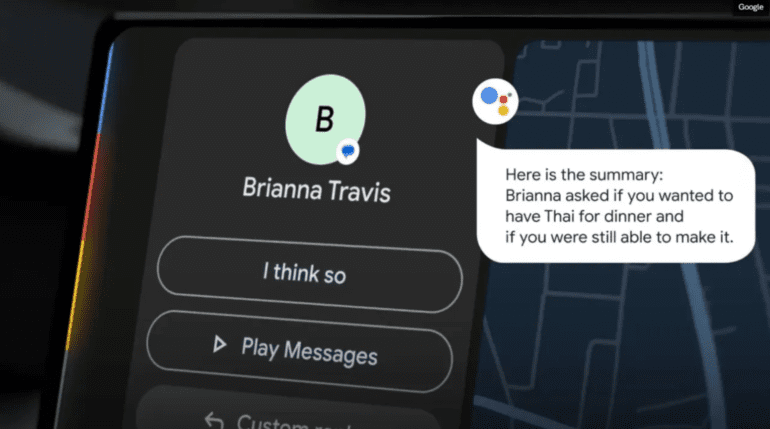TL;DR:
- Samsung Galaxy S24 introduces AI-driven functionalities like Magic Editor and Circle to Search.
- Google unveils new AI capabilities for Assistant, including text summarization in Android Auto.
- A support document addresses privacy concerns, clarifying that Assistant won’t log messages or use interactions for large language model training.
- Users must opt-in to utilize the feature, which can be enabled in Android Auto settings or notifications.
- Messages longer than 40 words trigger the summarization feature.
- Android Auto summarizes lengthy messages from individual senders or group threads, aiding in quick message comprehension.
- The feature ensures efficiency by providing concise summaries and quick response options.
Main AI News:
The recent launch of the Samsung Galaxy S24 unveiled a plethora of AI-infused functionalities, such as Magic Editor, Circle to Search, real-time language translation, and more.
Simultaneously, Google revealed a slew of novel AI capabilities for Assistant, notably the capacity to summarize lengthy messages and group chats while linked to Android Auto.
Although this feature has yet to be officially released, a newly published support document on the Google Community help page sheds light on its operational mechanics.
Google has prioritized addressing significant privacy concerns by affirming that Assistant will refrain from logging messages or summaries, with interactions remaining detached from the training of expansive language models. Nevertheless, given the utilization of AI for message summarization, the company concedes the possibility of occasional errors.
Upon the feature’s activation, users will need to opt-in. This can be facilitated through either the Android Auto settings or the notifications menu within the traditional settings interface, with the option to disable the feature at will.
Furthermore, users will encounter an opportunity to enable this functionality upon receiving a message surpassing 40 words while connected to Android Auto.
Google elucidated the types of messages subject to summarization by the feature: singular extensive messages from an individual or successive messages from the same sender or group thread. These messages will be condensed upon selecting “Play aloud.” Conversely, messages lacking AI summarization will be read verbatim. Should users receive multiple messages from diverse conversations, these will be sequentially articulated.
As illustrated by Google, in a hypothetical scenario, a contact dispatches a lengthy message inquiring about dinner arrangements. Instead of reciting the entire message, Android Auto succinctly conveys, “Here is the summary: Brianna asked if you wanted to have Thai for dinner and if you were still able to make it,” accompanied by various prompt response options.
Conclusion:
The integration of AI into Android Auto for summarizing text conversations represents a strategic move towards enhancing user experience and productivity. This advancement underscores a growing trend of AI integration within automotive technology, which is poised to revolutionize how drivers interact with their vehicles and digital content on-the-go. Businesses operating within the automotive and technology sectors should take note of these developments and consider potential opportunities for innovation and collaboration to meet evolving consumer demands.

